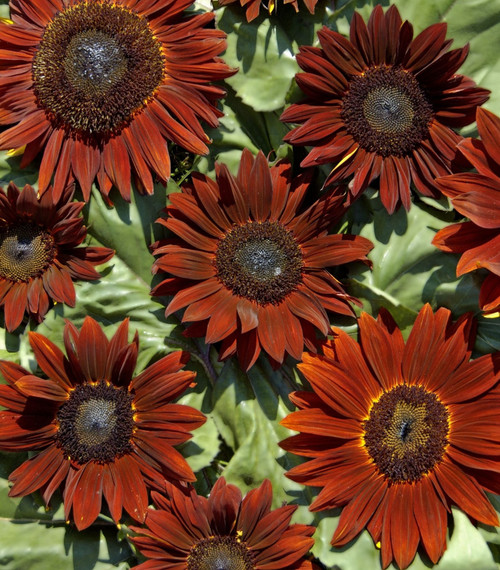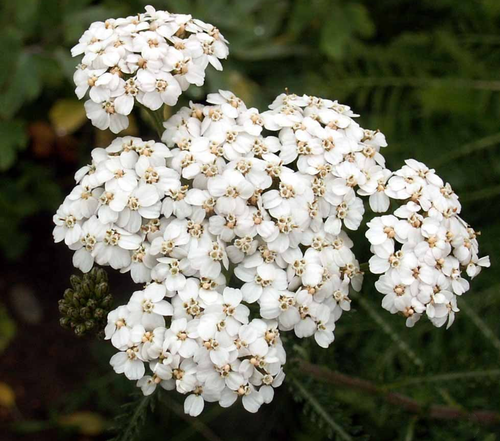Helianthus also known as Sunflower, Swamp sunflower, Thin-leaved sunflower, Maximillian sunflower, Ashy sunflower, Willow-leaved sunflower, Jerusalem artichoke are annuals and perennials, some occurring in dry woodland and prairies, others in damp, swampy habitats in North America, Central America, Peru, and Chile. These usually, tall coarse plants, have creeping or tuberous roots and large leaves. The showy, daisy-like flowerheads are usually 2-4 in. (5-10cm) across, but 12 in. (30cm) or more in the giant annuals and blooms from summer until the first frost. Self seeds easily. Leave the seed heads standing to provide a late fall and winter food source for birds. The flower provides nectar to pollinators from July until the first frost. This is a larval host plant that supports Silvery Checkerspot, Songbirds and several types of specialized bees. No serious problems. Tall plants require support.
USES: Annual, herbaceous or mixed borders, Wild gardens, Containers, Cutting flower gardens, Bee and bird gardens, Edible gardens, Meadows, Cottage gardens, Native gardens, Pollinator gardens, Mass plantings, beds
TOLERATES: Dry soil, Poor drainage, Deer
Botanical Name: Helianthus annuus ‘Ruby F1’
Common Name: Common sunflower, Sonnenblume
Type: Annual
Flower Color: Abundant, deep ruby flowers
Flowering Time: June to October
Plant Height: 6 ft. (190cm)
Plant Width: 24 in. (60cm)
Light Requirements: Full Sun
Water Requirements: Moist
Soil Requirements: Moderately fertile, humus rich, well drained soil
AHS Heat Zone: 12-1
Sowing Instructions (Cliff Notes Version): Sow seed of perennials in containers in a cold frame in spring; sow annuals at 61°F (16°C) in late winter or on site in spring. Cultivars may not come true from seed, and hybridize freely. Divide perennials in spring or autumn. Root basal cuttings in spring.
Click here for Planting Instructions







